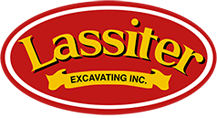Piles and Footers: Types of Foundations

Foundations vary in structure relative to the depth to which the foundation must be established in the ground. Small structures might only require a shallow foundation, which involves excavating between three and eight feet into the ground, before pouring a concrete footing by an expert Bay Area foundation drilling company.
Commercial Building Foundations
A deep foundation is used to support the weight of larger structures, and such foundations might be dug or drilled 200 feet or more. The depth that is necessary for any foundation is usually determined by calculating how much weight the foundation will need to carry, as well as the load bearing capacity of the existing soil or bed rock. The engineering of foundations is critical to the long-term health of the building, and the people living and working in them, as the saga of the Millennium Tower in San Francisco makes clear.
Shallow foundations
Among the shallow foundation types, one of the simplest is the individual footing arrangement, which is a configuration wherein columns are used to support the building above the ground, and each of those columns rests on its own individual footing. Strip footings are used when the above-ground building is supported by full walls, and each of those walls must rest on a strip of supporting concrete.
When a raft or mat foundation is used, the entire concrete basement floor serves as support for the building, and the building ‘floats’ on the ‘raft’ of concrete flooring. Raft foundations are generally used in locations where the soil is weak, and the weight of a building must be spread over a large area. In Northern California, earthquake-focused building codes also guide whether a raft structure will work.
Bay Area Deep Foundation Drilling Using Piles
Pile foundations are used in situations where upper layers of the soil are too weak to support a structure, or if the structure is very large and greater depth is required. Piles act very similarly to columns, in that they support the weight of the above-ground structure, and transfer its weight to the ground on which they are positioned.
An end-bearing pile foundation transfers all the weight of the structure above to a solid layer of ground at the bottom of the shaft where it has been sunk. A friction-bearing pile foundation does not necessarily need a strong layer of ground at the end of the shaft, because it transfers weight laterally into the surrounding ground, throughout the length of the pile itself.
Cast-in-place piles are installed by drilling a shaft into the soil then inserting a steel cage and then filling the shaft with concrete. The shaft diameter, steel cage configuration and concrete mix design are all pre-determined by engineers based on the loads that the pile will carry.
Helical Piles
Helical Piles are comprised of a steel (square or round) shaft that have helical steel blades attached to them. Helical Piles are screwed into the ground using a rotary hydraulic motor
Helical piles may be specified by engineers when pre-cast or cast-in-place piles are not a good option. Pre-cast piles may not be a good option where noise and vibration must be avoided, like near occupied buildings. Cast-in-place piles might not work well in situations where there is a high-water table or contaminated soil because of the cost. Depending on the situation Helical Piles could be a good alternative to these other foundation support methods. Because the helical pile system is made up of only one component, the helical itself, and it is screwed into the ground. There is less noise, vibration, and overall ground disturbance.
Bay Area commercial excavation and deep foundation drilling
When you have a need for commercial drilling, or excavation in the Bay Area, the contractor with the most experience and reputation is Lassiter Excavating, Inc. Contact Lassiter today with any inquiries you may have related to commercial construction projects, to explore ways in which our services can best support it.

